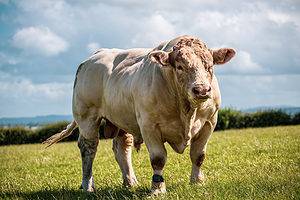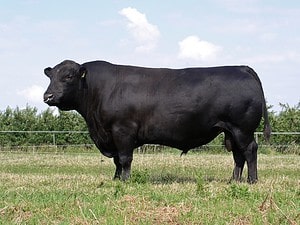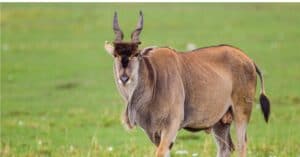Baby cows are playful, social, and emotional animals that love running, playing, and making friends. They are friendly mammals with the capability to communicate with one another and can even hold a grudge! Let’s jump into five incredible cow facts with adorable pictures!
#1: Baby Cows Love to Make Friends
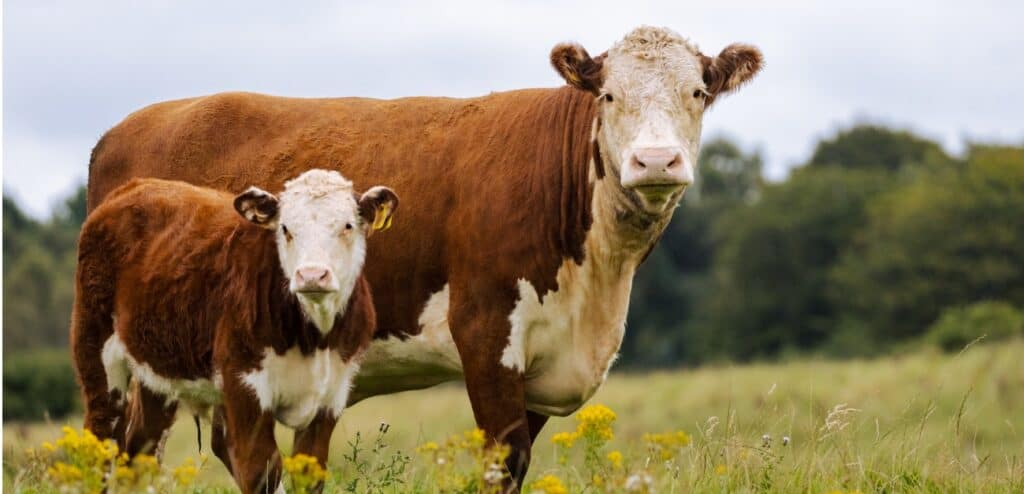
Cow calves are extremely social creatures that feel emotions.
©iStock.com/Scott Allan
Baby cows are some of the most social animals on Earth. Scientists even say that cows have complex emotional states. They can experience a wide range of emotions, including happiness affection, fear, and even anxiety.
Because of their well-developed social and emotional skills, calves love to make friends. They frequently interact with cows around them by talking and even playing with them. Cows chat with one another by mooing. They can change the tone or intensity of their moo to convey different emotions.
Baby cows can also hold a grudge. When they feel another cow has treated them poorly, they often refuse to further interact with the offender. In 2005, scientists observed cows making friend groups, staying within their cliques, and even snubbing cows who they didn’t like.
In general, calves spend a majority of their lives with 2-4 other cows in their families.
#2: Calves’ Spots are Unique
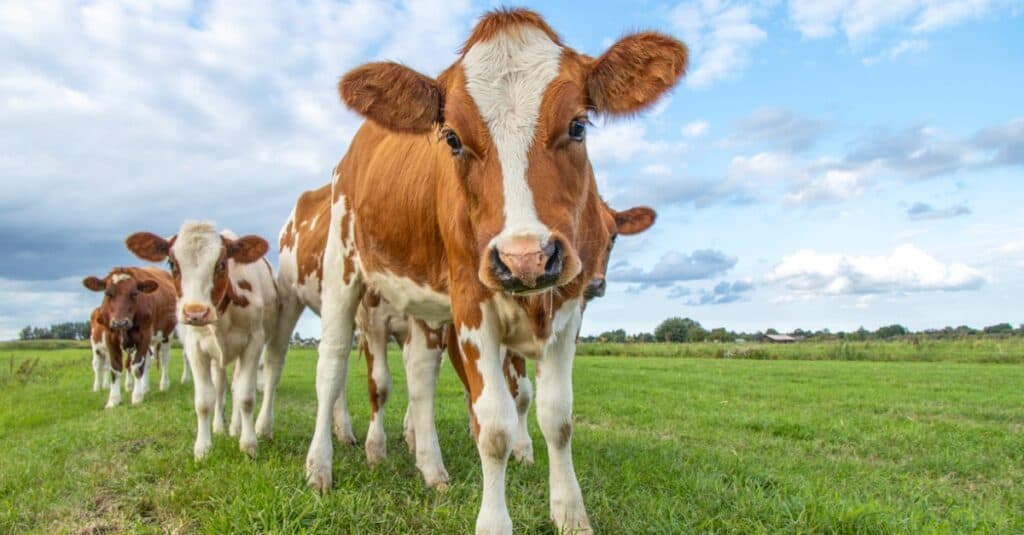
No two calves have the same spots!
©iStock.com/Clara Bastian
Tiny cow calves are easy to spot due to their unmistakable spotted coats. You probably didn’t know, though, that no two cows share the same spot pattern. That’s right – no matter how similar two cows might look, they are not identical.
There are a few different things that make a calf’s spots so unique. At the top of the list is a baby cow’s breed. The breed of a cow determines the color, placement, and density of their spots. Much like the fingerprint of a human, minute variations in the shape and size of a cow’s spots make them one-of-a-kind.
What’s more, some cows don’t have spots at all! Even though movies and television shows depict the classic spotted cow, there are solid-colored cows in many different colors of the rainbow. Beef cattle, for example, come in yellow, brown, black, white, grey, and even red!
#3: Baby Cows Have 300 Degree Vision

Cow babies can see nearly 360 degrees around them.
©iStock.com/James E Bailey
When compared to cows, humans have a limited range of vision. While we can see what’s in front of us and a blurry vision of our peripherals, cows can see much more. This is because baby cows have what is called panoramic vision.
So, what exactly is panoramic vision? The answer is simpler than you might think. It means that cows can see 360 degrees around their bodies without needing to move their heads. The only part of a cow’s surroundings that they can’t see is directly behind them.
If you’ve ever been warned not to walk up directly behind a calf, their vision is partly to blame. Since they cannot see behind them, when they sense something coming from the rear, their natural instinct is to kick. Consequently, approaching a calf from the rear is a hazardous business. Watch out!
Despite their impressive range of vision, cows have poor depth perception. For this reason, when an obstacle or shadow is in the path of a cow, it will put its head directly to the ground. This action is done so that the calf can gauge how close they are to something in their way.
#4: Calves Have an Excellent Sense of Smell and Hearing
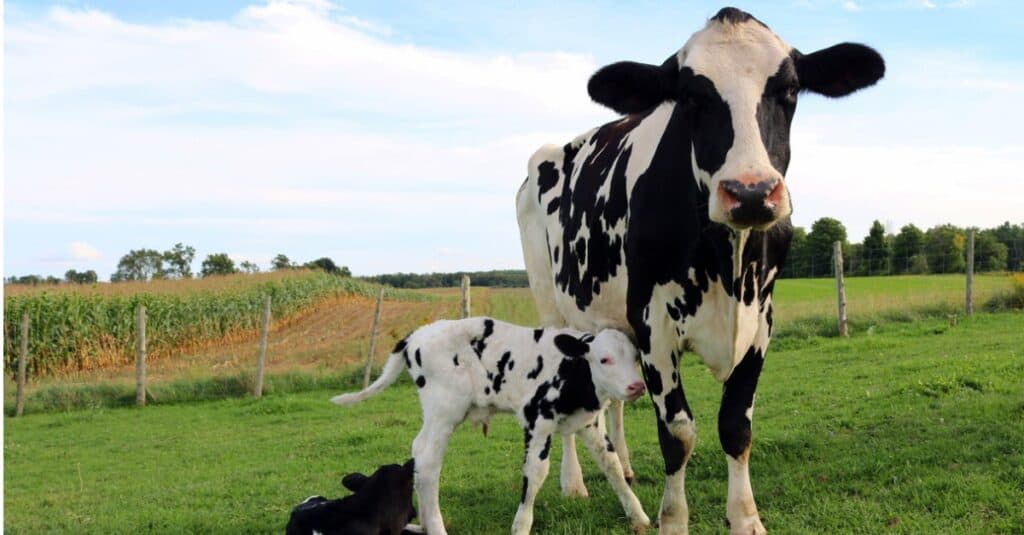
Calves can hear at frequencies that humans cannot.
©iStock.com/Diane Kuhl
Did you know that baby cows can hear sounds that human ears can’t? Calves have excellent hearing and can hear sounds at frequencies too low and high for humans to hear.
Specifically, cows can hear sounds in frequencies from 23 to 35,000 hertz. By comparison, humans can only hear frequencies from 25 to 23,000 hertz. Calves can also hear sounds from up to five miles away. Now those are some excellent ears!
Cow babies also have an extremely good sense of smell. They can detect odors up to six miles away, meaning that their smell is even stronger than their hearing! This means that cows can detect predators before they see them. Farm-raised cow babies can also smell when a meal is being served and will come running at dinner time!
#5: Calf Twins are Extremely Rare
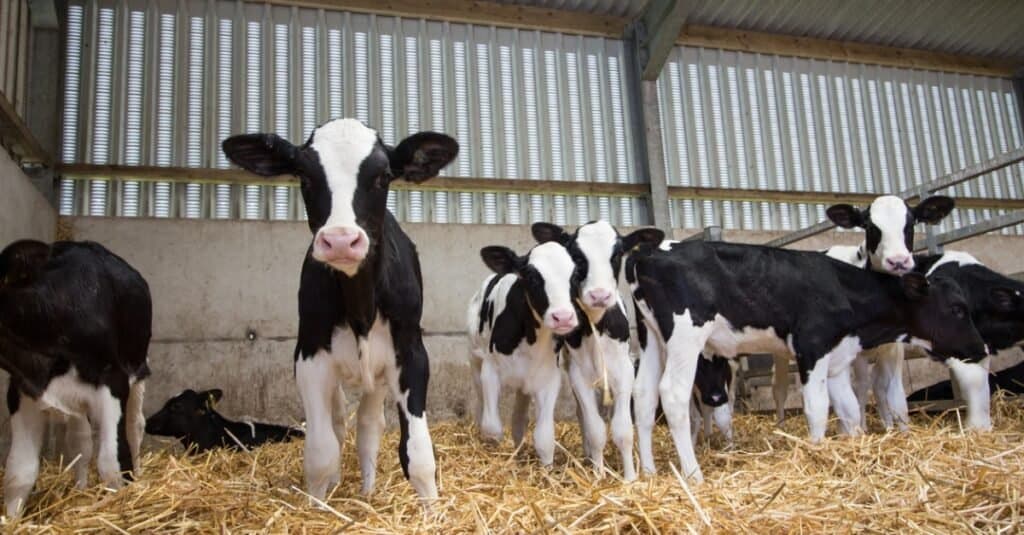
Mother cows rarely have more than one calf at a time.
©iStock.com/Deb Drury
When cows have babies, they almost always only birth one calf. It is so rare for a cow to birth quadruplets that when it happens, it’s a historical event. The chance of a mother cow having more four babies is a measly 1 in 179,200,000. The odds of triplets is slightly “better” at 1 in 105,000.
When it comes to multiples, cows have the highest probability of having twins. Still, it is estimated that only about 3% of cow pregnancies result in twins.
The photo featured at the top of this post is © iStock.com/Clara Bastian
FAQs (Frequently Asked Questions)
How much do baby cows weigh?
Calves typically weigh around 75 pounds at birth. That’s a big baby!
What do baby cows eat?
Baby cows are herbivores, which means they do not eat meat. Calves enjoy eating grass, corn, hay, and even lettuce!
Where do baby cows live?
Cows live on every continent except Antarctica.
What are baby cows called?
Baby cows are called calves. A group of baby cows is called a herd.
Thank you for reading! Have some feedback for us? Contact the AZ Animals editorial team.



